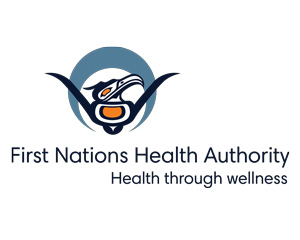First Nations people of all ages and genders living in BC can receive treatment for addiction in a group or family setting at one of ten First Nations Health Authority (FNHA)-funded treatment centres. The FNHA funds a total of 239 residential treatment beds in these treatment centres, whose programs are developed specifically for First Nations and offer a variety of cultural and clinical interventions and support for people struggling with addiction.
Services offered at treatment facilities vary but overall include services to First Nations individuals with physical disabilities; concurrent disorders; clients on methadone and Suboxone; family treatment; couples counselling; pregnant women; and clients on psychiatric medications.
Below are some highlights from a few First Nations treatment centres and programs, as well as some resources to support your healing journey.
Opioid Replacement Therapy offered at four Treatment Centres
Four treatment centres in BC offer Suboxone to community members that choose Opioid Agonist Therapy (OAT) as part of their healing journey. Suboxone is a prescription drug that is classified as an 'opioid agonist'. It is prescribed for clients who are dependent on prescription or illegal opioids. Suboxone helps people with opioid withdrawal symptoms and blocks opioid receptors. Suboxone is covered by BC PharmaCare and First Nations Health Benefits.
Currently four First Nations Treatment Centres offer Suboxone and two more centres are preparing to support clients with this therapy. Treatment centres offering Suboxone include:
- • North Wind Healing Centre (Dawson Creek)
• Round Lake Treatment Centre (Armstrong)
• Gya’Wa’Tlaab Healing Centre (Haisla)
• Carrier Sekani Family Services Addictions Recovery Program (Vanderhoof)
New ten-bed Recovery House at Round Lake Treatment Centre (Armstrong)
At Round Lake, the philosophy is “culture is treatment” and, starting last year, the centre extended its continuum of care beyond its intensive six-week treatment program (which addresses underlying traumas, grief and loss) and opened a new aftercare recovery home called the Painted Turtle Lodge.
“The Painted Turtle Lodge is a ten-bed recovery house which provides up to one year of relapse prevention and life skills. We help people get their lives in order before going back to community,” explains Marlene Isaac, Round Lake’s Executive Director.
“People struggling with addiction may have children in care, court cases or debts to deal with. At the Painted Turtle Lodge, we can provide support for all of this. We also offer work therapy for some clients to help them transition back to the work force when they leave us,” adds Marlene.
Support for Teenage Girls at Nenqayni Wellness Centre (Williams Lake)
Nenqayni operates the only First Nations treatment program for youth in BC and has been in operation since 1996. The four-month residential treatment program for 13-18 year old girls supports ten girls at one time and is aligned with the local school system, which provides the centre with a teacher and teaching assistant on site.
In addition to participating in the treatment program, the girls attend school full-time as well as participate in workshops to promote personal growth and life skills.
“The program aims to help the teens come to a realization and acceptance of the traumas they experienced in childhood … because you can’t change what you don’t acknowledge,” says Willie Alphonse, Nenqayni Wellness Centre’s Executive Director.
First Nations culture is embedded in this youth program. The girls begin each morning with smudging, drumming and singing at 8 a.m. and they routinely participate in sweat lodges, medicine picking (sage), and pipe ceremonies. The girls have all made their own drums, rattles, and dreamcatchers. They respect the cultural elements of the program above all else.
The treatment program is also a wellness program and starting this year, the program became 100 percent tobacco free. Nutrition and traditional foods are important parts of the program as well.
“The centre began providing traditional foods five years ago, including moose and deer,” says Willie. “The girls love it !”
Treatment Centre Resources
• Here is map showing the names and locations of the First Nations Treatment Centres in BC http://www.fnha.ca/Documents/First-Nations-Treatment-Centres-in-BC.pdf
• For detailed information about programs at individual treatment centres visit http://www.fnha.ca/what-we-do/mental-wellness-and-substance-use/treatment-centres
Are you trying to support a loved one?
If you are trying to support a loved one struggling with addiction, here are some helpful tips on connecting with them through conversation, the top myths about addiction, and information on taking care of your own wellness:
• Talking About Substance Use
http://www.fnha.ca/Documents/FNHA-Talking-About-Substance-Use-Infosheet.pdf
• Top 5 Myths about Addiction
http://www.fnha.ca/Documents/FNHA-Myths-About-Addiction-Factsheet.pdf
• Taking Care of your own Wellness by: being active, eating healthy, nurturing spirit and respecting tobacco
http://www.fnha.ca/wellness/wellness-for-first-nation

